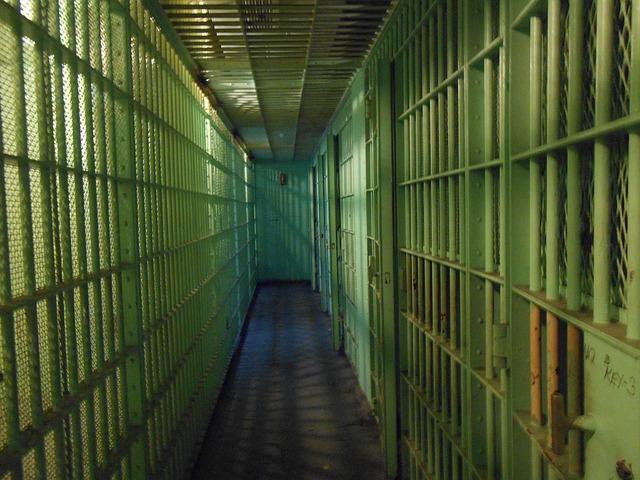Cheddar cheese, waterparks and farmers’ markets … thinking of Wisconsin usually brings up these fun Midwest staples. Across the state, residents think fondly of their hometowns, and here in Madison, we pride ourselves on liberal political leanings and burgeoning art culture.
But Wisconsin has under-publicized some of its more painful attributes. This state has some of the highest racial disparities in the country, especially when it comes to prison demographics.
Some communities are more ‘unlivable’ for Black Americans than others but overall, the entire state of Wisconsin has roots in discriminatory behavior, which leads to shockingly high incarceration rates for people of color.
According to the Sentencing Project, Wisconsin’s Black population is incarcerated at a rate 5.1 times the rate of whites. While this disparity is apparent nationwide, Wisconsin ranks top five in discrimination and high incarceration rates nationally time and time again. There is no denying institutional racism exists in Wisconsin.
Feb. 28, Deneen Smith of the Kenosha News published a chilling expose on racial disparities in the Wisconsin judicial system.
“Black men were 28 percent more likely to be sentenced to prison than white men and Hispanic men 19 percent more likely to be sentenced to prison [statewide]. American Indian men had the worst outcomes statewide, more than 34 percent more likely to be sentenced,” Smith wrote.
In 2016, The Sentencing Project conducted a study entitled The Color of Justice, which further embarrasses the state of Wisconsin. Wisconsin has the second-highest incarceration rate nationwide — behind only Oklahoma — and ranks second in population racial disparities, behind only New Jersey.
Is the a positive correlation between incarceration rates and racial disparities just chance? I think not. If these numbers aren’t salient enough, just look at a figure from the Prison Policy Initiative’s Wisconsin profile.
The profile should boil your blood. There is no redeeming explanation for this racial disparity. Black bodies are surveilled at a higher rate, arrested more frequently and prosecuted more readily. To those same oblivious individuals who still think Black Americans just commit worse crimes, think again.
In the judicial district covering Kenosha, Racine and Walworth counties, Black men are more than 50 percent more likely to be sentenced to prison than white men accused of similar crimes.
Wisconsin cities are simply unlivable for Black Americans. Communities use prisons and jails as a catch-all for missteps. Instead of rehabilitation, strengthening education and investing in community infrastructure, Wisconsin invests in prisons.
The Wisconsin court’s Office of Research and Justice statistics published the study on incarceration disparities in January 2020. Since then, we’ve seen global movements toward police and prison reform, highlighting a myriad of legislative and social changes to get this job done.
From the Equal Justice Initiative to the Black Lives Matter movement, activists, politicians and social scientists have created a think tank for effective ways of moving society forward.
There are less effective approaches to the findings of this study, as well. Kenosha, as one of the worse counties listed in the study, reacted defensively to its findings.
“I can’t speak for all [judges], but I know they take these statistics seriously and seek to provide justice without regard to race,” Kenosha County Circuit Court Judge Jason Rossell said.
The answer to criminal reform is not a colorblind conviction. It is prison reform and antiracism. It’s careless for policymakers and stakeholders to ignore the racial disparities in economic stability, education and opportunity.
To acknowledge them, take responsibility for our collective complacency in their perpetuation and brainstorm ways to move forward is a much more productive approach, as Tim Thompkins of Kenosha succinctly articulated .
“We’re living in the worst community (for African Americans) in the United States and these numbers only support that,” Thompkins said. “What we need is better leadership and people with vision … you don’t need another commission, you don’t need another committee, you need to enact policies that aren’t racist.”
As college students, we have been vocal in the fight toward racial equality. But we are moving into a phase of social change where momentum is thinning and old habits are being revisited. The Wisconsin judicial system has a history of hiding influential, reputation-damaging data, such as rising COVID-19 cases in prisons.
Knowledge is power, and withholding knowledge is an active attempt to avoid reform and progress. Holding public offices accountable for their records is crucial. We are the next generation of lawyers, judges and activists.
In order to begin dismantling racial inequity in Wisconsin, we must focus on open communication and community action. Institutional funding and regulations — from public university education to state prisons — are interconnected. Collective effort surrounding these institutions is necessary to ensure every Wisconsinite has equal access to success in this state.
Emma Axelrod (eaxelrod@wisc.edu) is a junior studying political science and journalism.


